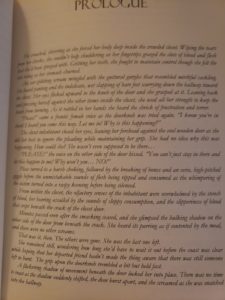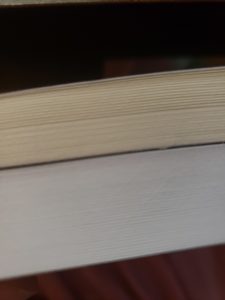Though this shouldn’t need to be said I’ll say it anyway… This is my blog. These are my thoughts and opinions. This isn’t gospel, nor is it carved in stone. I am sharing what I’ve learned and experienced with you. Your own experience might be completely different and it isn’t necessary for you to agree.
Now…
I’ve discussed before the things that we, as independent authors, must do to aid in the creation and maintenance of our work. There’s an equally important step after that, though, and that is when it’s time to decide what price we should give our novel.
Some are under the misguided impression that, because we’re independent and may not necessarily have a staff to pay, we should be “okay” with pricing an average-sized novel cheaply. I’d like to do what I can to dispel that notion based upon my own personal experiences and using real-life examples. I am not claiming to be a financial guru, nor am I assuming the guise of a financial counselor. I’m not giving you advice or telling you what to do, I’m just giving you facts as they have applied to me.
When determining the price of a novel there are a few things to consider. Some authors aim for the low-cost, fast-sell, low-profit option to get their name out there, feeling that with all the copies that are bound to sell at a lower rate, there should be more than enough sales to encourage customer reviews. In this scenario, reviews are the goal, which can sometimes lead to higher rankings and more visibility on Amazon and other sites.
Then there are some authors on the opposite side of the above scenario, those who price their books higher…likely because there is a similar book out that’s all the rage and selling like crazy. They’re jumping on that, “If you liked X, you’ll love Y!” bandwagon. They will ride the wave, only adjusting the price after the furor has died down for the associated work.
But, what of those of us who are relatively new to self-publishing? How do we know how to discover the balance between paying ourselves fairly for the work we put into the novel, versus making sure that the price is attractive to readers? To be honest, it’s tricky…especially during economic downturns. The best thing you could do is follow your instinct combined with any of the information below:
- What is the average price of similar novels in your genre? I don’t necessarily mean that if you have a horror novel, you should check the price of Stephen King’s latest novel and copy that. No. I’m saying that it’d be best to take a broad look at what’s out there and average the prices of 5-10 novels with a similar genre, theme, and word count.
- Where are you in your writing career? If you’re just starting out, it might not be a bad idea to be modestly-priced right out the gate. You are, for the most part, an unknown. There is no immediate bankability based upon your name. By all means, though – do NOT sell yourself short! But, at the same time, it might not be wise to slap a $20 price tag on a debut novel, either.
- If your book has been out for a while, has it won any awards and/or gained a large following? I will use myself as an example in this case. The paperback version of Duality was priced at $7.99 when it was initially released. Though part of that was due to an error that I take full responsibility for (and will explain later), another part of it was because it was my debut novel. No one outside of my immediate friends, family, and a handful of Twitter followers knew who I was. I knew the work that went into writing the book, and I was very well aware of what I felt it was worth. However, I still wanted to price it modestly at the start – to get my name out there. It worked. Not only did Duality help to transform me into an award-winning author, but my overall following grew as a result. It has since been republished and the price was increased.
You could take any part of those suggestions, combined with whatever you decide on your own, to create custom guidelines for how you feel your work should be priced. Allow me, though, to toss a couple more nuggets into the mix.
I spoke before about an error that I made when Duality was initially released. This mistake is one that I hope others will learn from or keep in mind when self-publishing your novel. In fact, there are some authors who only release their books in e-book format (Kindle, etc…) so as to avoid this sort of hassle and also because of the increased profit margin on e-books. It seemed minor, but this mistake contributed to an actual loss of profit on copies sold before it was fixed, and I’ll explain why.
At the moment, I self-publish through Amazon. Kindle Create is what I use to format my novels for e-book, but at the time Duality was written and published, I used Microsoft Word for paperback formatting. Being extremely inexperienced at the time, I did not choose the right trim size or margins for Duality. The most commonly sold paperback books are 6”x9” and 5.5”x8.5”. Mine was slightly larger than the former. In addition, the incorrectly-set margins showed pages that were nearly filled from end to end in type. Don’t believe me?

On its own, it doesn’t look all THAT bad. However, a lot of amazing updates were made to both Kindle Create and Microsoft Word since Duality was published. In fact, they’re integrated now, should you decide you want to take advantage of that. I was able to write Vitae and convert the one document into a format to fit both paperbacks and e-books. That was when I saw the way to fix the mistakes made with Duality with just a few clicks. How did it work out?

Your eyes aren’t playing tricks on you. I did also change the font to make it more readable and to ensure there’d be less strain on the eyes. Need a side-by-side comparison?

You might not think that it could have made that much of a difference, but it most definitely did. Here’s why:

The version at the top shows the thickness of the novel when first published. Because of my errors, the book was 184 pages when printed. Once fixed, the version shown at the bottom, the book was 275 pages. The word count remained the same. The suggested pricing based upon the initial page count was lower, obviously, which contributed to my decision to make Duality available for $7.99. Since Duality has won an award, that and the increased page count to a recent change in price. Furthermore, fixing the size of the book to make it 6”x9” has also made Duality eligible for Expanded Distribution.
We’ve gone into all of that and still haven’t touched upon another vital aspect of book pricing, especially as it applies to paperbacks. Printing costs!
Amazon doesn’t allow us to sell our books for “free,” they just don’t ask for any money upfront. What they do is deduct printing costs from each book that is sold and then printed for shipment. But, what does that look like?

This is the printing cost of a 420-page novel with the specifications shown above. That means that nearly six bucks are being deducted from YOUR end of every book sold and printed. Considering that your part of the profit is 60% and then $5.89 is deducted from whatever that 60% amounts to, how does that ultimately affect how much you can make? Of course, printing cost varies based upon page count, paper used, interior, etc…but, this is a general idea. A novel would have to be priced at $13+ to achieve any sort of profit, and $13 is cutting it very close. Any lower and there would be no profit at all.
Incidentally – you’re looking at one of the main reasons there are quite a few authors out there who sell only e-books. They don’t have to deal with this sort of thing otherwise.
As to my mention of Expanded Distribution, we can discuss that more next time. This might be enough for you to digest for now. Until then, stay safe and healthy.
xxxooo